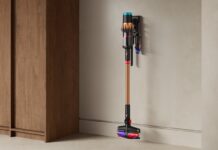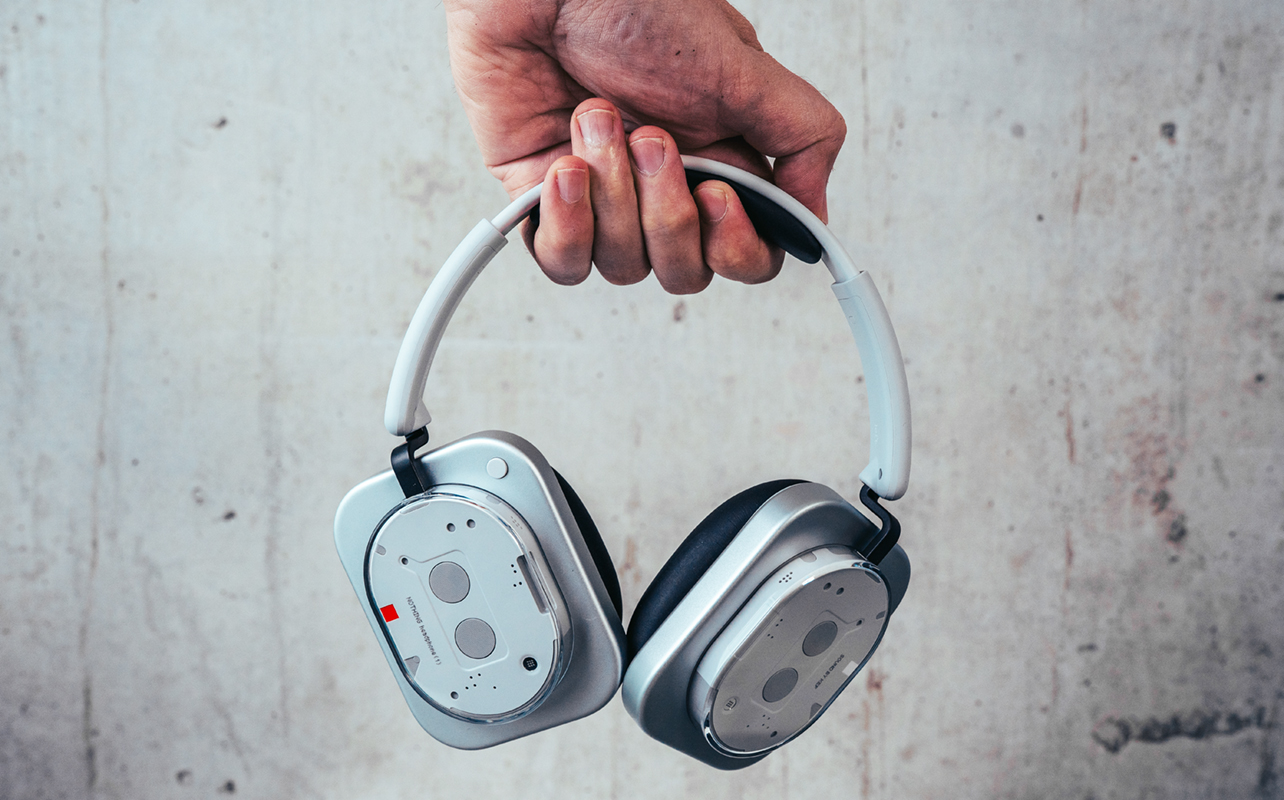
The Nothing Headphone (1) are a unique pair of over-ear headphones that buck trends in design, while aiming to turn heads on performance. Coming from a British brand that’s never made over-ears before, it’s a bold start that sets it apart from others.
You may know nothing about Nothing nor even heard of the brand before, but it’s not some untested upstart. It’s proven it can make quality products, as evidenced by its lineup of smartphones and earbuds. These debut over-ear headphones very much follow that pedigree.
Nothing Headphone 1 design
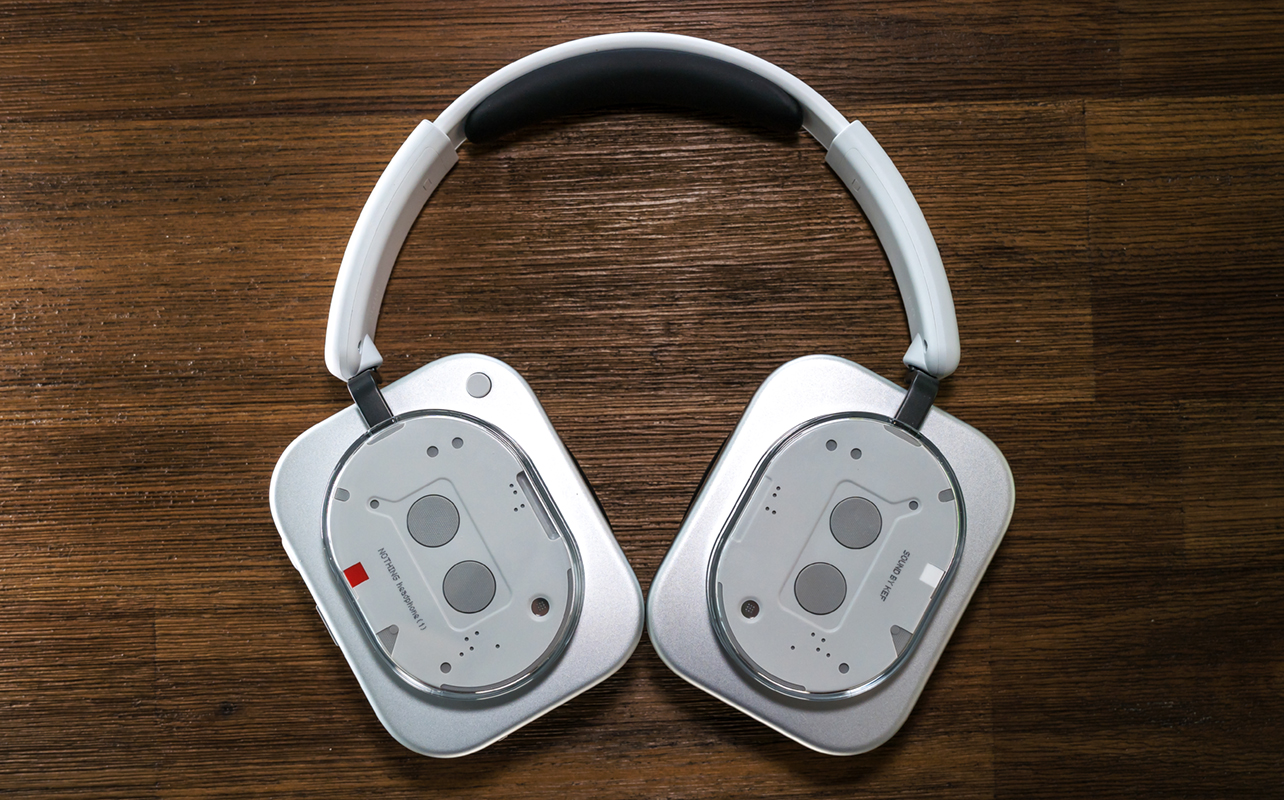
When you’re new to a category and looking to stand out in a crowded field of established brands, you have to make a statement somehow. These headphones certainly stand out, courtesy of the squared outer cups that blend in nicely with the oval-shaped see-through panels revealing some components inside. It’s almost as if Nothing took two old cassettes and fashioned cups out of them. Honestly, it’s unlike anything I’ve seen in the headphone space before, but I kind of dig it.
They’re definitely head-turners in their own way. Friends would ask about these “weird-looking headphones” on my head, and I can understand why. Mind you, none of that matters if they’re not comfortable and that’s where Nothing finds the right mix. Memory foam cushions apply a gentle, yet tight seal to passively isolate noise without a squishy feeling over longer listening periods. Since the headband’s foam is the same, an equal level of comfort applies there, too. I wore them for longer periods and never really felt pinched or itchy at any time.
They also have IP52 dust and water resistance—a rare plus for any pair of over-ears. I wouldn’t advise wearing them under a downpour but even this level of water resistance bodes well for handing sweaty gym workouts. The only thing is they’re heavier than most other over-ears, so that could be noticeable after a while.
You get a softshell case to keep the Headphone (1) safe and secure while commuting or travelling. It’s not anything particularly special, but because the headphones can twist to lay flat, you have a thinner profile. The downside to this is that they have a bigger footprint than headphones that fold and lay flat, so it’s something you have to think about if space in your bag is limited.
Setup and connectivity
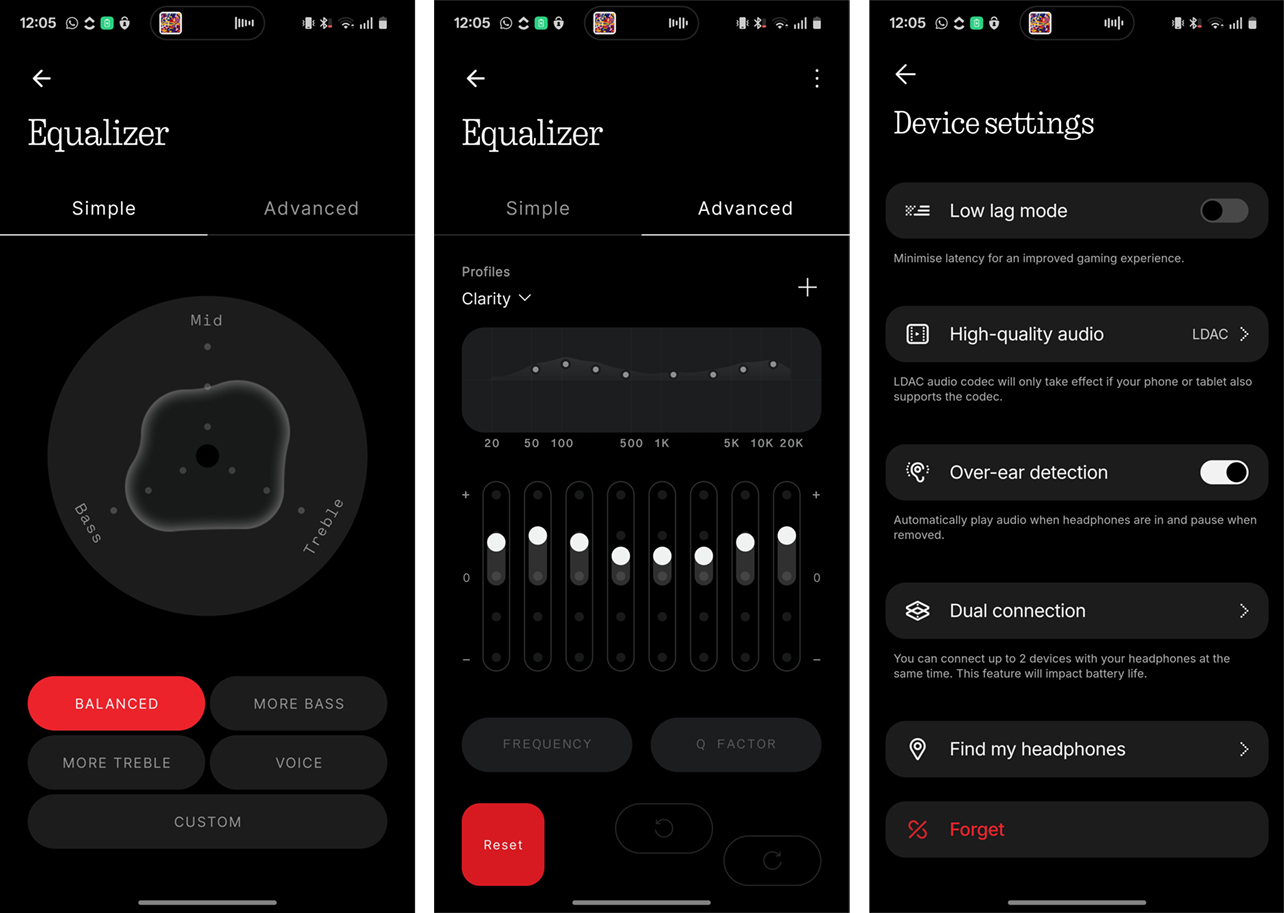
You don’t need a Nothing Phone to get the most out of these headphones, though the company leaves a couple things aside for those users. They’ll work just fine on either iOS or Android, along with Windows or Mac computers, so you have plenty of familiarity out of the box. Multipoint support means you can stay paired with two devices simultaneously, which is super convenient when working on one and listening or talking from another.
One catch is you need to use the Nothing X app to enable that, as it’s off by default. The app is a must for not only customizing the various features, but also figuring out what kind of sound you want from them.
Nothing doesn’t include any sort of hearing test like other brands do to tailor sound based on your own ears, so you need to tinker and experiment. If you like what you hear off the bat, that’s great, only it’s important to remember that’s not a true representation of what they can do.
So, you have two ways to go about it. Actually, more than two but if we’re just talking about the equalizer, you can go with the preset modes in Basic or make your own adjustments in Advanced. What works best for you is entirely subjective but it’s worth taking the time to find out.
Find My Headphones is not a wide-ranging feature, meaning it lets you play a loud alert tone from the Headphone (1) so long as they’re on and connected via Bluetooth. This isn’t anything like the kind of tracking that uses Google Maps, making it useful only when you’re not sure where they are nearby.
Controls and customization

It’s a good idea to activate the wear sensors on the headphones by toggling on over-ear detection to automatically pause playback when you take them off, resuming again when putting them back on. I’m not sure why Nothing doesn’t make this the default but at least it’s easily enabled.
The rest of the control setup is all physical. On the back edge of the right cup, there’s a roller you can use to adjust volume—also doubling as a button. Press it once to play/pause or press-and-hold to toggle between active noise cancellation (ANC) and Transparency modes. Below that is a paddle you tilt right to skip a track or left to go back, as well as for answering or hanging up phone calls. Hold the paddle in either position to fast-forward or rewind 10 seconds at a time, respectively. This works with both music and video.
On the corner of the right cup’s face is the main button. Press it once for the voice assistant, or hold to turn spatial audio on/off, mute the mic, or cycle through EQ presets.
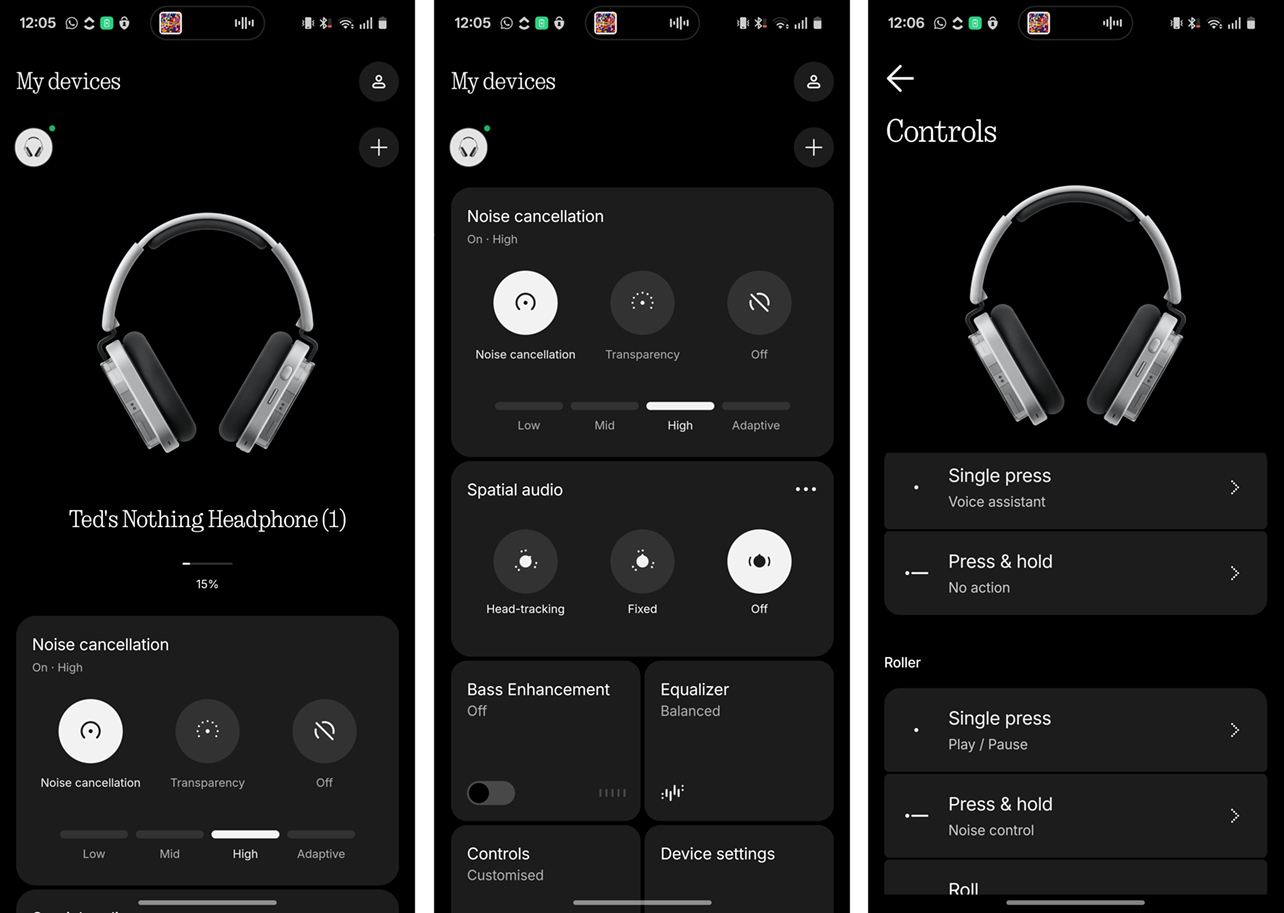
The Nothing X app lets you adjust these controls to some degree, though it’s largely a matter of preference. Generally speaking, they all work really well, as you’d expect from tactile controls compared to touch-sensitive ones.
Oh, and about those Nothing Phone exclusives. The main button can activate Essential Spaces, an AI feature in Nothing phones that lets you record voice notes and set reminders without touching your phone. You can also capture screenshots for it to extract information, though I find that works better doing it directly from the phone. Channel Hop is exclusive to the Nothing Phone 3, which lets you cycle through your audio apps to go from listening from one and then over to another.
Audio quality
Nothing takes a safe route to how these headphones initially sound. I know audio is subjective but the Headphone (1) need tweaking to pull out their real potential. Out of the box, they produce a flat, subdued sound signature that lacks the kind of punch one should expect from over-ears that cost this much. Fortunately, the app’s EQ is there to save the day.
The presets might provide the answers your ears crave, though I recommend trying out the 8-band EQ sliders to augment the parts of the spectrum that need it. I did, and it elevated the sound superbly, delivering the sort of detail and resonance I personally prefer. That’s not to say they’re perfect or devoid of limitations, just that they can hit a different level when you put some work in.
These headphones support SBC, AAC, and LDAC Bluetooth codecs, with the latter offering hi-res audio playback on supported services and devices. LDAC playback is fine to get that little extra detail wherever you can hear it. Another option is to use the included USB-C and 3.5mm cables for wired playback, and what I recommend most when watching a show or movie because it removes all lag and latency. The app’s gaming mode helps mitigate that with Bluetooth but it’s not a total match.
Spatial audio is the one disappointment I have to call out. It’s not great, neither in how it applies the virtual surround effect nor in how it sounds with content made for it. Your ears might feel differently but I doubt it.
Call quality is solid, with the onboard mics doing well to isolate voices while blocking out background noise. Wind noise is the one exception, as it finds ways to creep in, so apart from that, you should have no issues.
Noise cancellation and Transparency
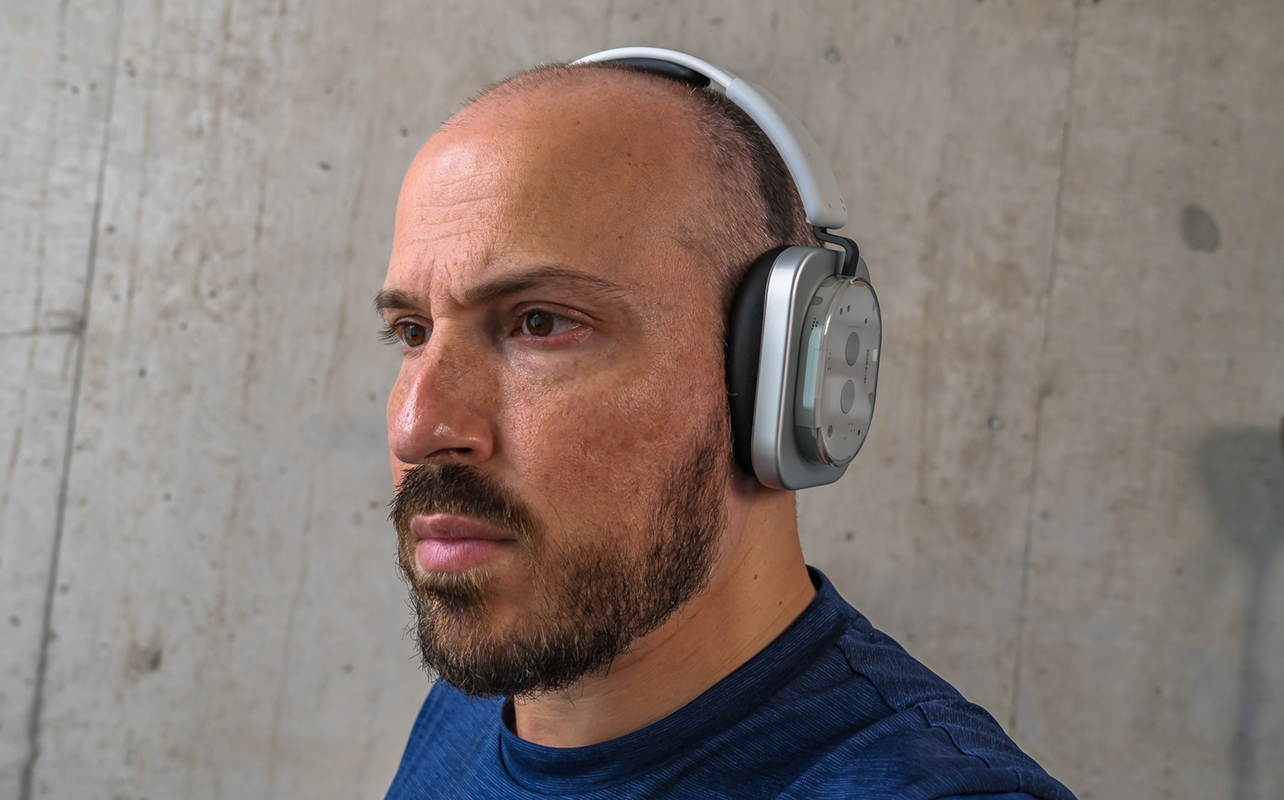
Really good passive isolation is half the battle to getting the best noise cancellation. Since the Headphone (1) are good at that, the question is how the onboard mics manage to do the rest. Thankfully, ANC is excellent—better than I expected—drowning out background noise in effective ways that either entirely remove or muffle what’s happening around you.
That includes both chatter around the house and street noise when walking around outside. If you have a loud A/C fan or even someone watching TV in another room, you probably won’t hear it. Nothing utilizes a granular setup in the app that lets you choose how potent you want the effect to be. This way, if you want to hear at least some of the background for safety reasons, you can. If, however, you want to be left alone, you can always set it higher to do just that.
Its one major weakness is the wind. Much like with phone calls, gusts penetrate the ANC walls to affect what you’re listening to. High-frequency sounds can also pierce through, like screeching trains or sirens, but the ANC reduces those enough to not be a nuisance.
Transparency isn’t granular, so take what it gives you, which is a solid pass-through of ambient noise. It’s good enough to hold a brief conversation without taking the headphones off as long as you’re cool with how your own voice sounds a little muffled.
Battery life
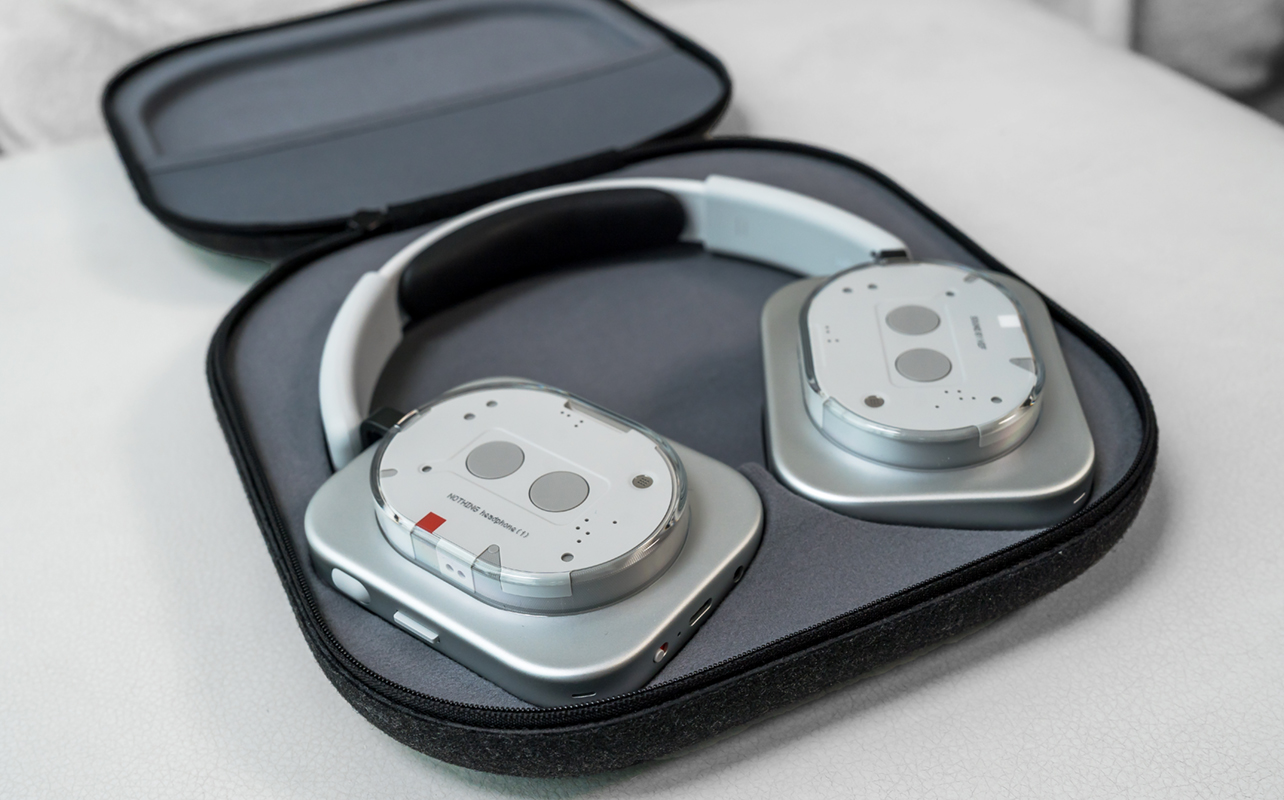
Nothing claims the Headphone (1) can last up to 35 hours per charge. The biggest determining factor is volume level, so crank it up and you may not get there. I’m more moderate myself, and found myself hitting 30-35 hours with ease. That’s really good for over-ear cans, and a good sign that you can wear them for extended listening without worrying about recharging.
Final thoughts
The Nothing Headphone (1) sport a look that won’t appeal to everyone. That’s probably stating the obvious. But if you’re willing to not judge this book by its cover—or you like what you see—the combination of fit, function, durability, and performance make a strong argument against going with the usual suspects in this category and giving Nothing a chance. While you have to exercise some patience to find the sound you want, the results will ultimately speak for themselves.
The Nothing Headphone (1) are available now in black or white. Check out all the latest over-ear headphones.




